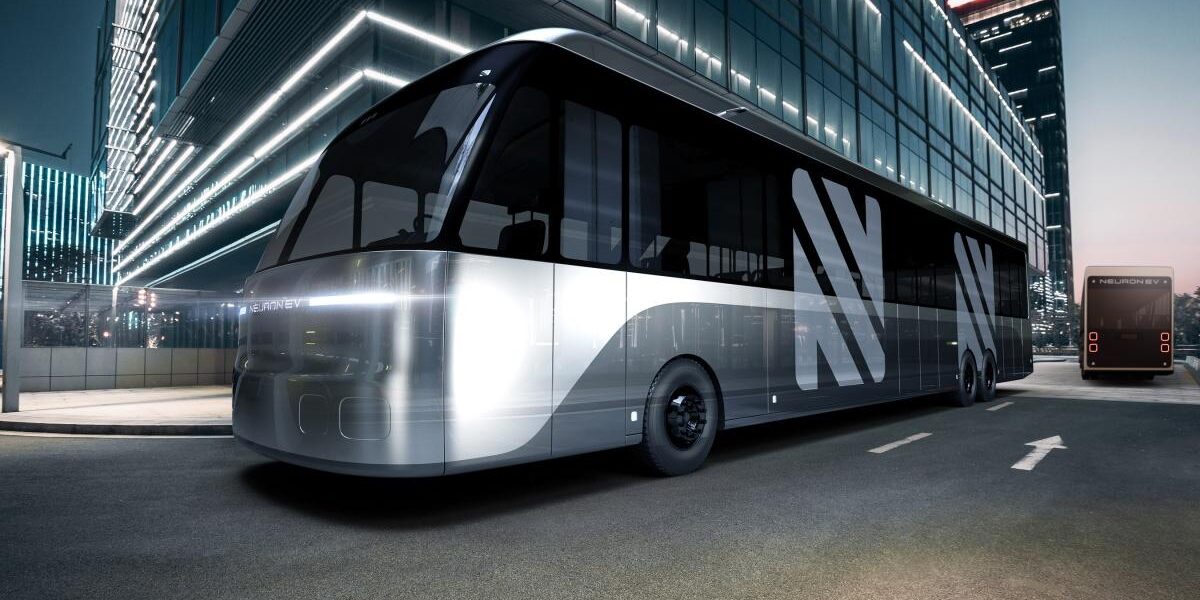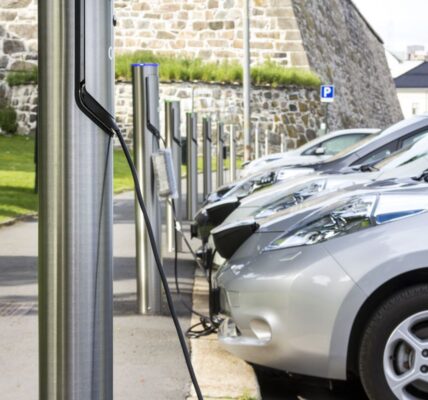If 2019 was a watershed year for Chinese electric buses in Latin America, in 2020 they became mainstream.
Latin American countries are moving towards cleaner public transport in their most populated cities. In the process, they have overcome existing entry barriers to the widespread rollout of the technology – driven globally by China – including scarcities of national financing models, charging points and trained personnel.
Manufacturers of Chinese electric buses stand out as the largest providers to the region. Adalberto Maluf, president of the Brazilian Association of Electric Vehicles and marketing director of Chinese maker BYD, said: “BYD sold 1045 buses last year in Latin America. This shows that the market is growing. It is not the size of the European market, or the US, but it’s already very close.”
In total, Latin America has 1229 electric buses in operation in 10 countries, including 563 ordinary buses, 624 trolleybuses and 41 midi e-buses, according to the new E-Bus Radar project led by the Sustainable Mobility Laboratory at the Federal University of Rio de Janeiro.
Chile: most Chinese electric buses outside China
With 410 buses currently operational, Santiago has the largest electric fleet in Latin America and the largest of any city outside China. Transantiago, Santiago’s Bus Rapid Transport system (BRT), which transports about 60% of the Chilean capital’s population, manages the fleet. BYD (285), and other Chinese manufacturers Yutong (100) and King Long (25) supplied the vehicles.
The first 100 buses arrived in December 2018, bought directly by the national government as part of its electromobility strategy, which aims to have only electric buses by 2050. But this caused problems, according to Franco Basso, professor at Valparaiso Catholic University.
“There was no bidding process, which would have lowered the costs of the purchase. The government then had to compensate for its higher expenses and raised the bus fares, which partly triggered social conflicts in Chile,” he said.The 410 electric buses generate between 25% and 70% less noise than regular diesel units and save 24,600 tons of CO2 emissions per year, according to government estimates. They are more expensive to buy than diesel buses but remain competitive over their near 20-year life cycles since operational costs (electricity instead of fuel) are up to 76% lower. Maintenance such as repairs and tire change is also 25% cheaper.
Transport is responsible for 28% of Chile’s emissions, according to the country’s greenhouse gas inventory. Passenger transport accounts for two-thirds of the total emissions from the sector. According to a UN study, the transition towards an all-electric taxi and bus fleet in Santiago would avoid 1,379 premature deaths from respiratory illness by 2030.
Colombia: Chinese electric buses hit three main cities
In September 2019, Cali added a first batch of 26 buses made by China’s Sunwin Bus to its MIO transport system. Medellin followed suit in November with 64 BYD buses for its Metroplus system, a purchase 100% funded by the local government. The moves meant the cities became the first to advance towards Colombia’s Paris Agreement commitment of replacing 75% of public buses with zero-emission vehicles in seven major cities by 2040
Capital city Bogota, which postponed the introduction of electric buses amid concerns that Chinese manufacturers did not yet have the reliable articulated and bi-articulated buses required by the city’s Transmilenio, finally got on board in late 2019.
Yet it chose to go with 379 buses that will not be part of the BRT system but will feed into it. Awarded in a public tender in November 2019, they are owned by three local operators that work with BYD. The new busses are scheduled to hit the road this September. BYD also shipped its first 18-metre articulated buses for test runs in Bogota and the city of Pereira in central Colombia. The aim is to eventually replace some of Transmilenio’s buses. BYD also launched a 25-metre bi-articulated prototype which it also plans to send to Bogota.
Bogota’s next step is the likely replacement of its 2,200 other buses. “With the authorisation of a public operator, the city will now be able to buy the buses directly and not through the operating concessionaires, mirroring the model that Medellín successfully used,” says Colombian transport researcher Darío Hidalgo.
Going electric has an additional appeal in Colombia, which generates electricity from a comparatively cleaner energy grid since 70% of electricity comes from hydropower.
Montevideo: first steps
On May 30, Uruguay took its first big step towards cleaner public transport by rolling out 30 electric buses in capital city Montevideo. Local companies bought the buses, subsidised by a government scheme that matches the cost of diesel and electric varieties.
Twenty of the buses were purchased from BYD and a further 10 from Yutong. Each can run for between 250 and 280 kilometers on one charge. The aim is to boost the fleet to between 120 and 150 buses in Montevideo in the coming years, representing 4% of the city’s total fleet.
Transport accounts for about 70% of Uruguay’s total consumption of oil, which the country imports. President Luis Lacalle Pou sees electrifying buses as important not only for the environment, but also to reduce dependency on foreign oil.
Alongside the subsidy, Uruguay is part of a UN Development Programme (UNDP) scheme called MOVES, which promotes the transition towards efficient and sustainable mobility.
“We are moving from a scheme in which the country spends millions of dollars importing fuel for buses to having electric units that run based on energy created domestically and based on renewable sources,” said Ariel Álvarez, head of MOVES, adding that Uruguay produced 98% of its energy last year from renewable sources.
Argentina: a long way to go
Electric buses are more rare in Argentina but recent developments could open the door to a wider rollout. Production Minister Matías Kulfas is in talks with other ministries and local vehicle manufacturers to assess the feasibility of producing electric buses domestically, instead of importing them.
We are on a path for Argentina to change its bus fleet… It will take time but the process has already started
Capital city Buenos Aires has just eight electric buses, currently as part of a pilot scheme on four lines. Four Chinese manufacturers: Zhongtong, Xiamen King, Higher Bus and Yutong, each of which provided two buses, financed the deal. The city government installed charging stations.
Buenos Aires City has one of the largest bus fleets in the region with 18,000 running every day. The city government also has a clean mobility plan which it hopes can help reduce 14% of transport sector emissions by 2035.
Meanwhile, the city of Mendoza in the Andean foothills also has 18 BYD buses currently running, all of which were purchased by the local government at a cost of US$400,000 each. The initial plan sought to double the quantity, but authorities downscaled plans due to the economic crisis.
Mariano Jimena, head of the Argentine Association of Electric Vehicles, said the role of electric buses in the country is still limited. But he highlighted legislative steps taken in the past few years. “We are on a path for Argentina to change its bus fleet towards electric vehicles. It will take time but the process has already started.”
Mexico: Trolleybuses roll
The first week of January this year, 63 trolleybuses made by Yutong began circulating in Mexico City along Eje Central, one of the city’s main streets. This comes as part of the project “Trolebici” which includes bicycle lanes, public bicycles for rent and the new trolleybuses, which involved investment of around US $35 million.
“We are aiming for a cleaner public transport to reduce air pollution,” Claudia Sheimbaum, Mayor of Mexico City said in a press conference.
The trolleybuses, which have zero emissions, are powered by dual overhead wires and have a battery that enables them to run independent of wires for up to 70 kilometres. The new models consume less electricity than previous ones, have obstacle detectors and special alarms that alert drivers to cyclists. The last time Mexico City renewed its trolleybuses was 22 years ago, according to the general director of the Mexico City Electric Transport Service, Guillermo Calderón.
Ren Wenhui, commercial manager of Yutong in Mexico, said Mexico City is the first to use the company’s trolleybuses in Latin America, although its electric and gas buses already run on the streets of Aguascalientes in central Mexico.
Mexico City was declared the most polluted city in the world by the UN in 1992 and has since implemented a series of mitigation measures, achieving a 7.7m tonne reduction in carbon emissions between 2008 and 2012. However transport still generates 45% of the city’s emissions and air quality has been dropped in past years. Although the move towards cleaner energy would undoubtedly help, Rodrigo Diaz, Mexico City’s undersecretary of mobility planning, said there isn’t a viable financial model to purchase electric buses at a larger scale at the moment.
Brazil: still catching up
Over 390,000 buses circulate across Brazil, but a meager 247 are electric. Only eight cities in Brazil have electric buses, with only a handful in each. Even cities that have been most enthusiastic about electrification, such as São Paulo, where a recent law established a goal of zero pollutants from transport within 20 years, have been slow to grow fleets.
For decades, São Paulo has had 200 electric trolley buses as part of its fleet, but the promised substitution of diesel buses for electric ones has been slow. It has only purchased 15 so far.
Adalberto Maluf of BYD admits the country has been slow to grow its green bus fleet. But, he argues, the growth in sales of electric garbage trucks and hybrid electric cars is cause for celebration. “Slowly some niche markets are consolidating,” he says. “It took us almost ten years to sell 11,000 hybrid electric cars, from 2009 to 2018, but in 2019 alone, we sold 12,000. This shows the market is ready.”
However, the Covid-19 pandemic has slowed the boom. Factories were forced to close and stop production, and hopes that Brazil would sell 27,000 hybrid cars this year have faded. Still, Maluf says the future is bright, and says BYD has plans to sell hundreds of buses to São Paulo, Campinas and even Salvador, a city in northeastern Brazil that still has no electric buses.
Guayaquil: one private operator with e-buses
Ecuador’s largest cities have also debuted electric fleets, albeit different types. Largest city Guayaquil went for ordinary buses, while the capital Quito opted for 85 trolleybuses.
In the port city of Guayaquil, 20 BYD buses began rolling in mid-2019, as part of an initiative led by one of the city’s private transport operators. Saucinc, a small company operating one route, went to the national government for help in replacing its fleet of diesel-powered buses. Their first major challenge was building new charging points.
Pilot projects
A number of other cities also have buses on test runs, with single BYD buses in the Peruvian cities of Lima and Arequipa. Last year, Asunción in Paraguay introduced its first two Zhongtang buses and Panama City started a pilot plan with two BYD vehicles.







